Craftswomen all over the world sooner or later come to try painting on fabric. This creative process gives the opportunity not only to express yourself, but also to create a unique and inimitable garment in your wardrobe. Having thoroughly felt and gone through the practice of painting on fabric, it is possible to implement your business in this direction and share your creativity with others. This article presents some nuances and facts for understanding how to paint on fabric with acrylic paints for beginners.
Acrylic painting on fabric: regular or special acrylic paints
To decide on the type of paint, you need to know where this paint will be used. Regular acrylic paint is available in a large number of shades in stores and thus attracts an inexperienced buyer. Such paint can be used for painting hard and inflexible materials and areas of products: shoes, hats, some types of collars.
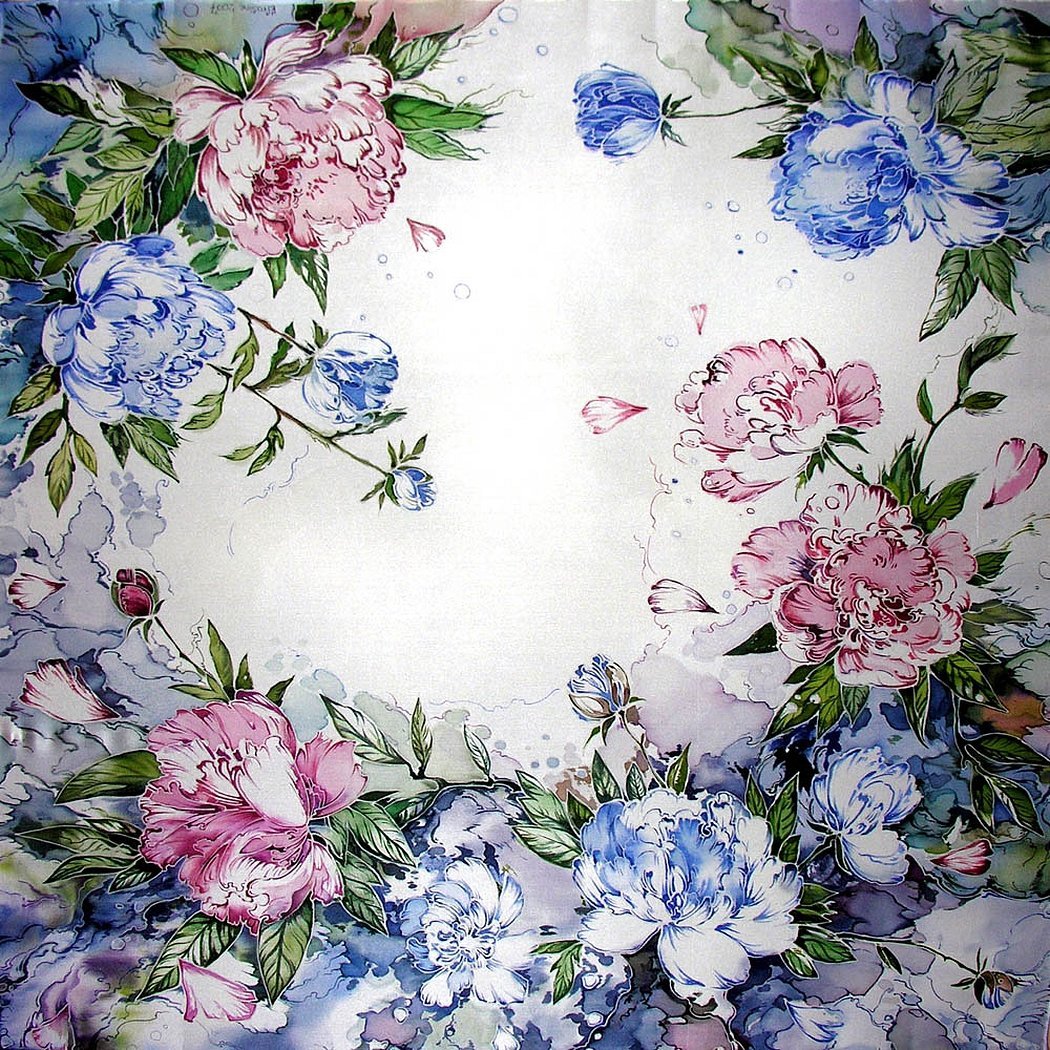
Also, regular acrylic is often used for painting carnival, theater and cosplay costumes. The fact is that it does not provide the opportunity for comfortable everyday use of the item due to its harder texture after hardening. With proper thermal treatment, the result should not crack, but this still happens often.
During use, such paint may peel off during washing, and because of this, items painted with regular acrylic paint should be washed in a delicate mode or by hand. Special acrylic paints, for example, Acrylic Paint Set Decola, have a more suitable texture for this purpose, because they will not crack, and they also withstand the washing process better.
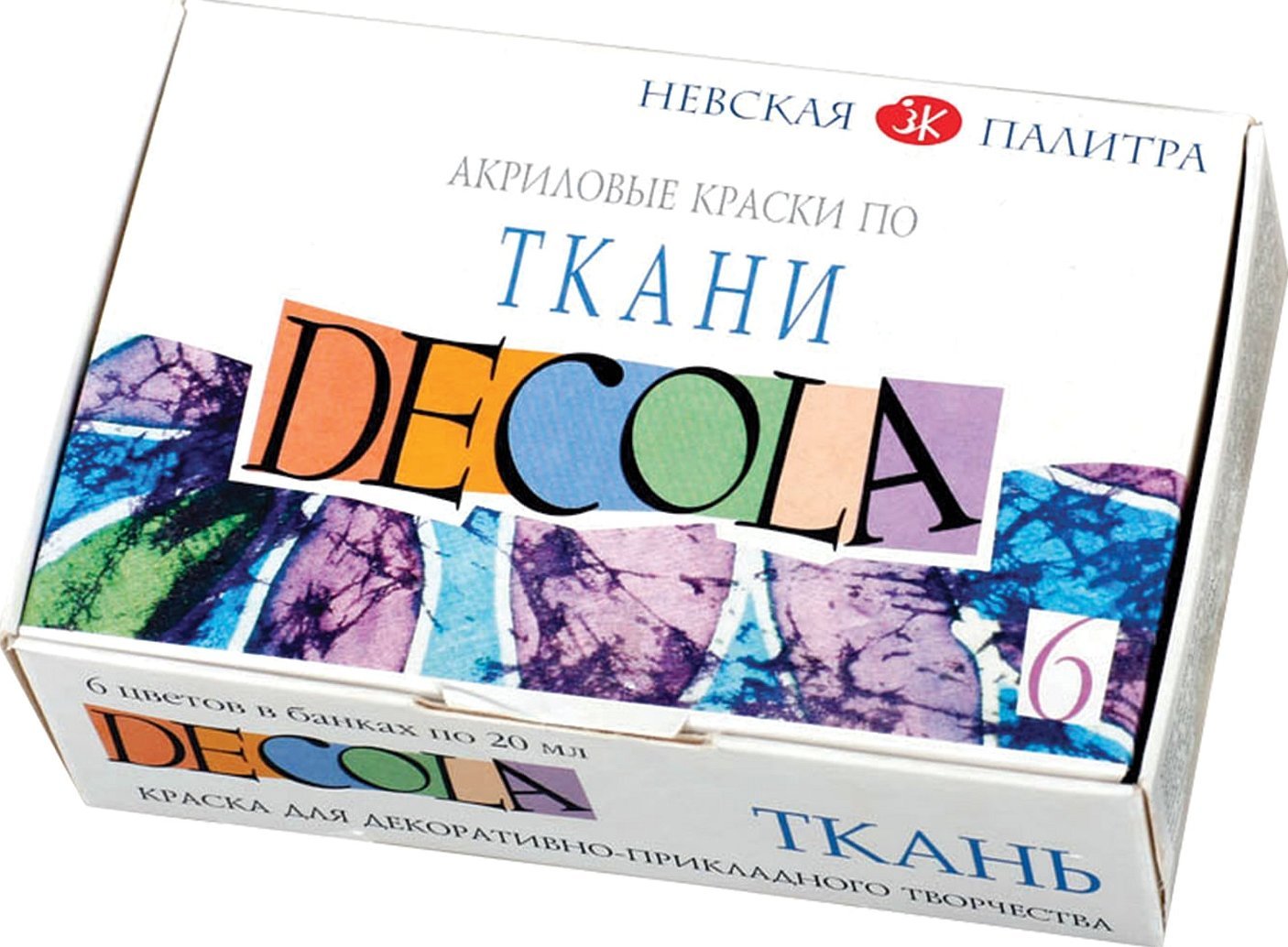
Selecting fabric for painting
When choosing fabric, it is worth considering the peculiarity of the technique when painting: after applying the drawing, it is fixed with hot temperature. Accordingly, synthetic fabrics should not be taken for such products, and cotton can withstand the maximum temperature of the iron. If you really want, you can take fabric with a small percentage of synthetics and iron at a lower temperature, but for a longer time.
Fabrics that you should pay attention to first of all:
- Natural silk is a satin fabric with a soft velvety backing and a very smooth and pleasant front side. Paint is applied to this fabric very well, it acquires a brighter shade and can shimmer in different tones under certain lighting. You need to be careful with satin, as it is soft and easily gets snags.
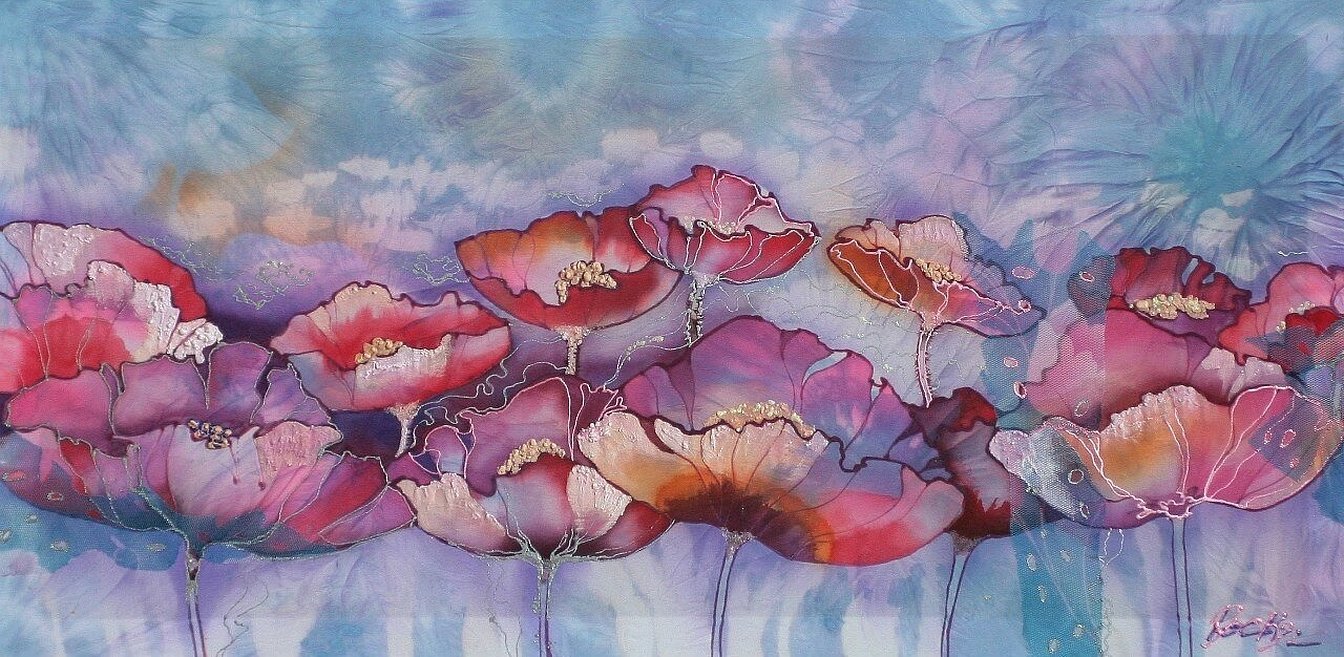
- Crepe de Chine (natural) – it is not as shiny as satin, but it is very dense and the colors on it look just as bright.
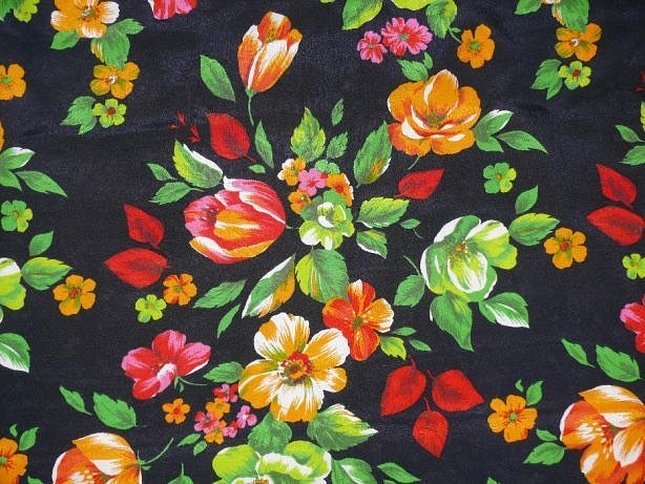
- Chiffon is also a durable fabric, but the color of acrylic paint becomes less bright, and more airy and transparent. It feels quite textured to the touch.
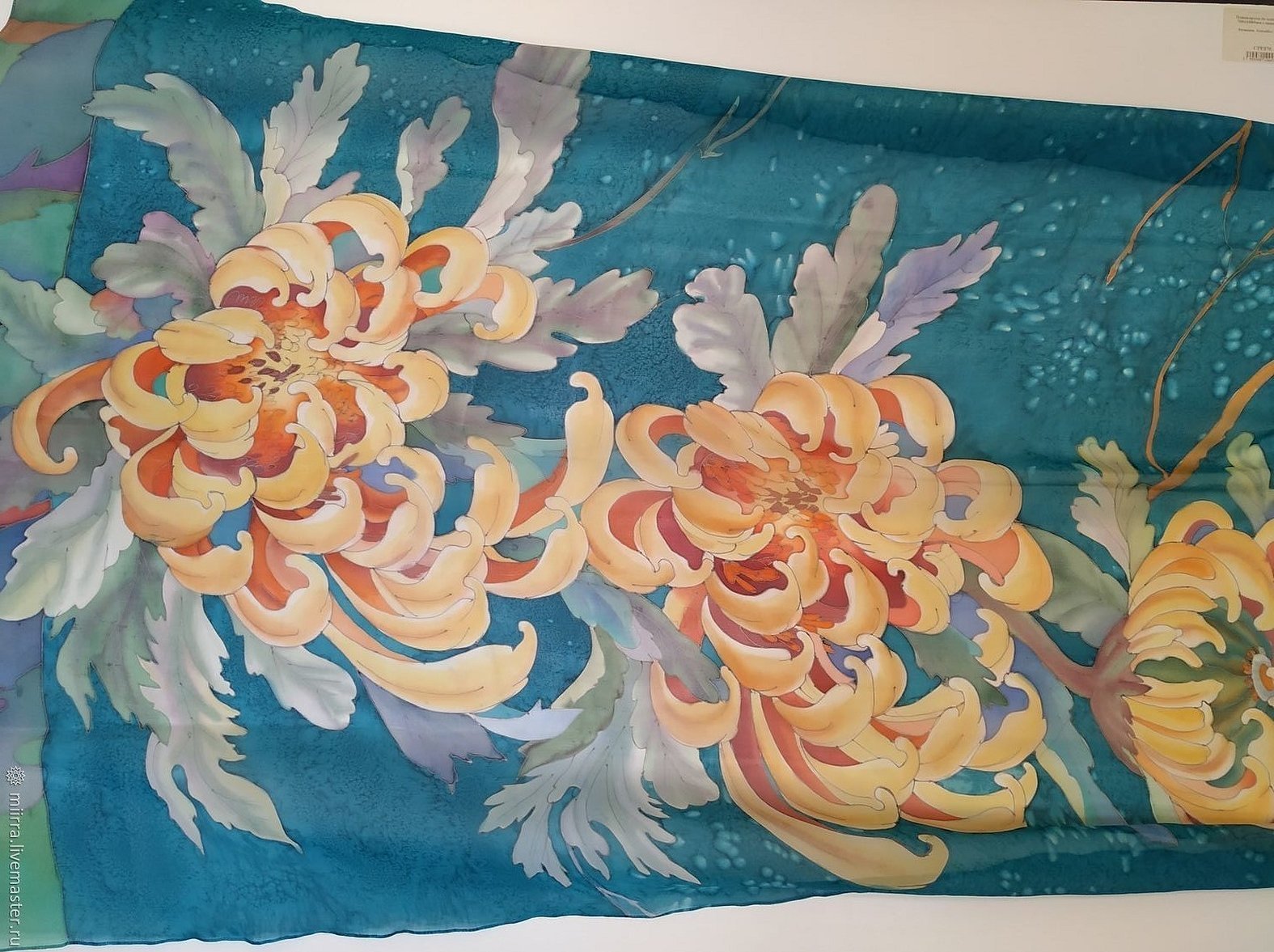
- Jacquard (natural) – has common features with satin and crepe de chine, but still has more common characteristics with satin.
- Silk velvet is characterized by its texture and deep, bright color rendition.
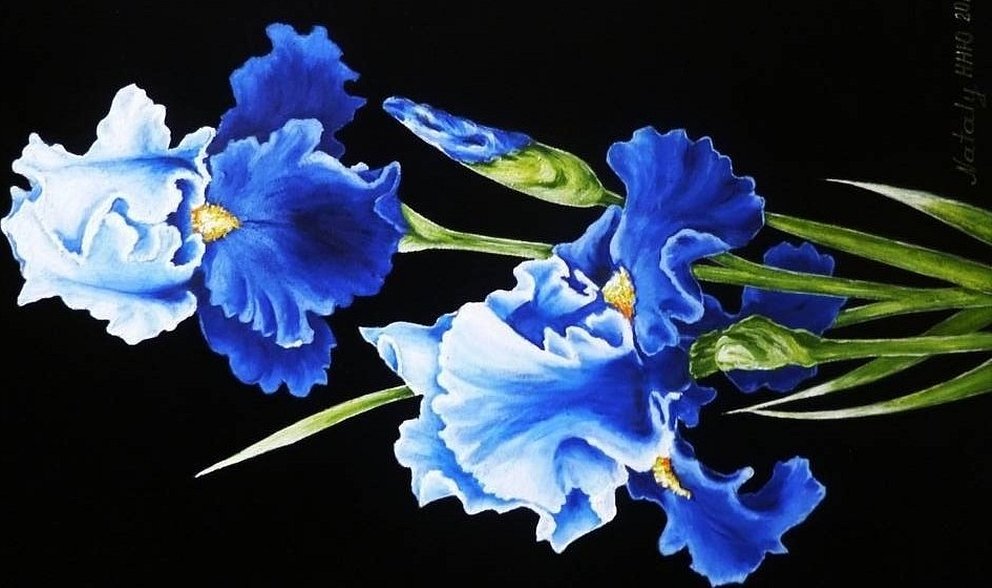
- Cotton and linen look great in use and are considered the most practical for acrylic painting.
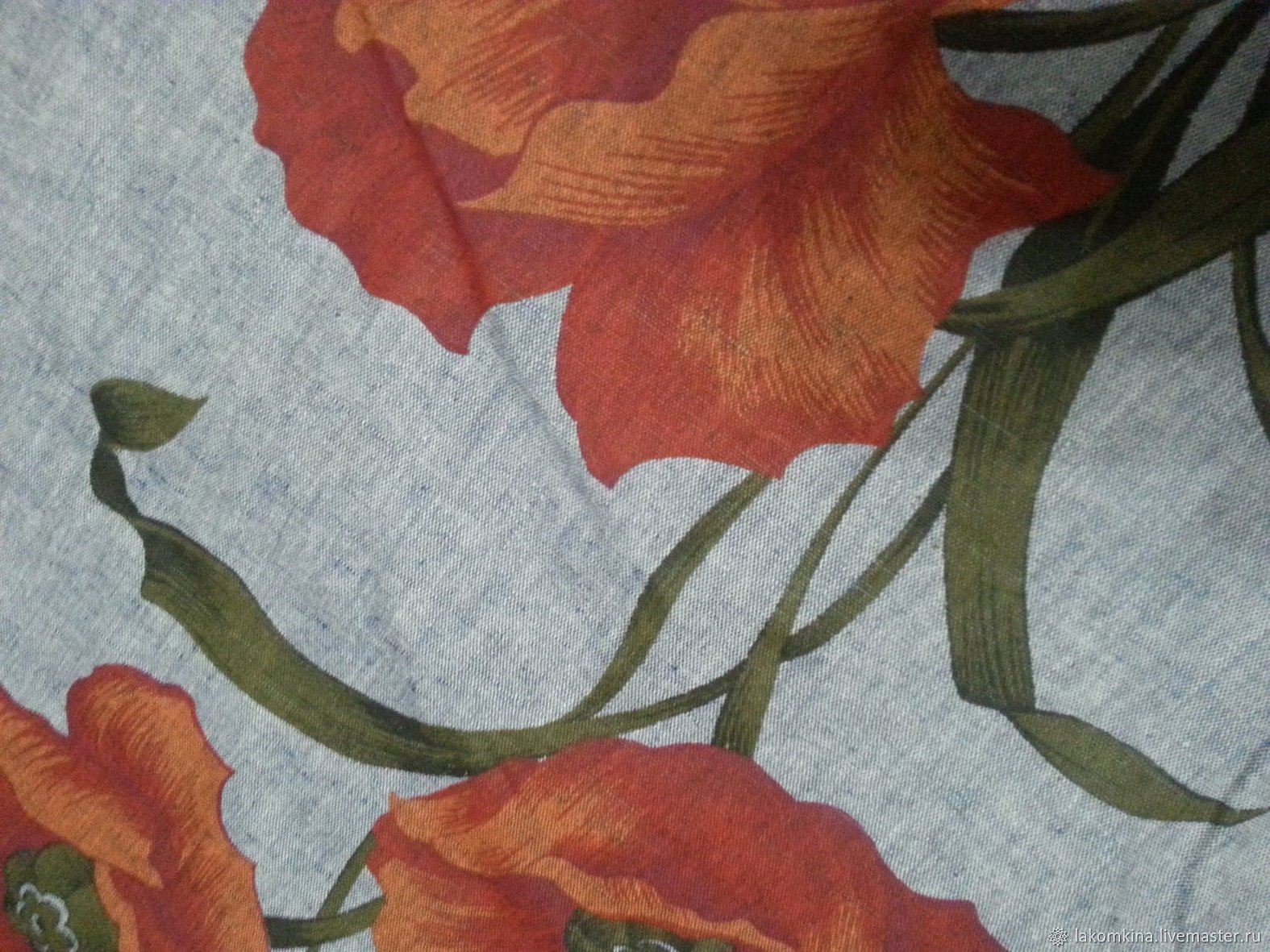
Types of painting on fabric
Painting on fabric with acrylic paints also requires preparation of the material itself.
Important! Before applying at home, the material must be placed in cold water and washed, then left to dry and ironed at a low temperature.
Hot batik
The technique of this type involves working with hot (hence the name) wax, paraffin, stearin, and their mixtures. This composition is applied to the fabric as quickly as possible so that it does not harden. A regular batik brush is not suitable for this. A bristle brush is used. There is also a special device, chanting, which is widely used in this technique.
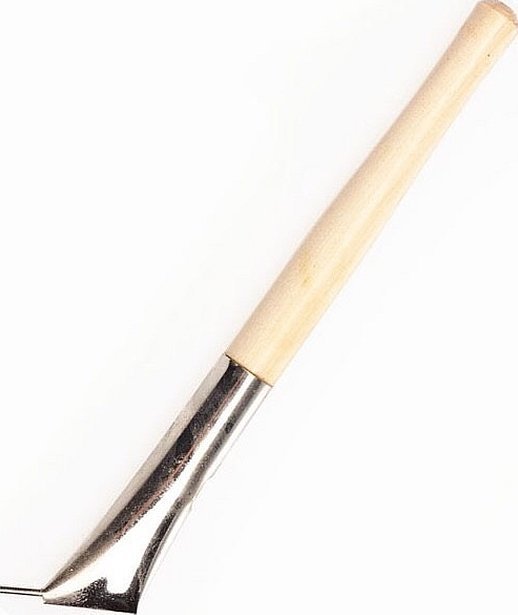
This way the paint does not touch the waxed areas. After finishing the work the wax is removed with an iron and paper.
Hot batik is made in several layers of different colors, from 2-3 to 5-6 layers depending on the contrast of the work. The history of this technique originates in Indonesia and India long before it appeared in Europe. You can also use the "craquelure" technique, this is a method when after the cold batik technique, a thin layer of wax is applied to the fabric and gently broken to form cracks on it. These cracks are filled with paint, after which a thin layer of delicate webbing or imitation of cracks on an aged painting is formed.
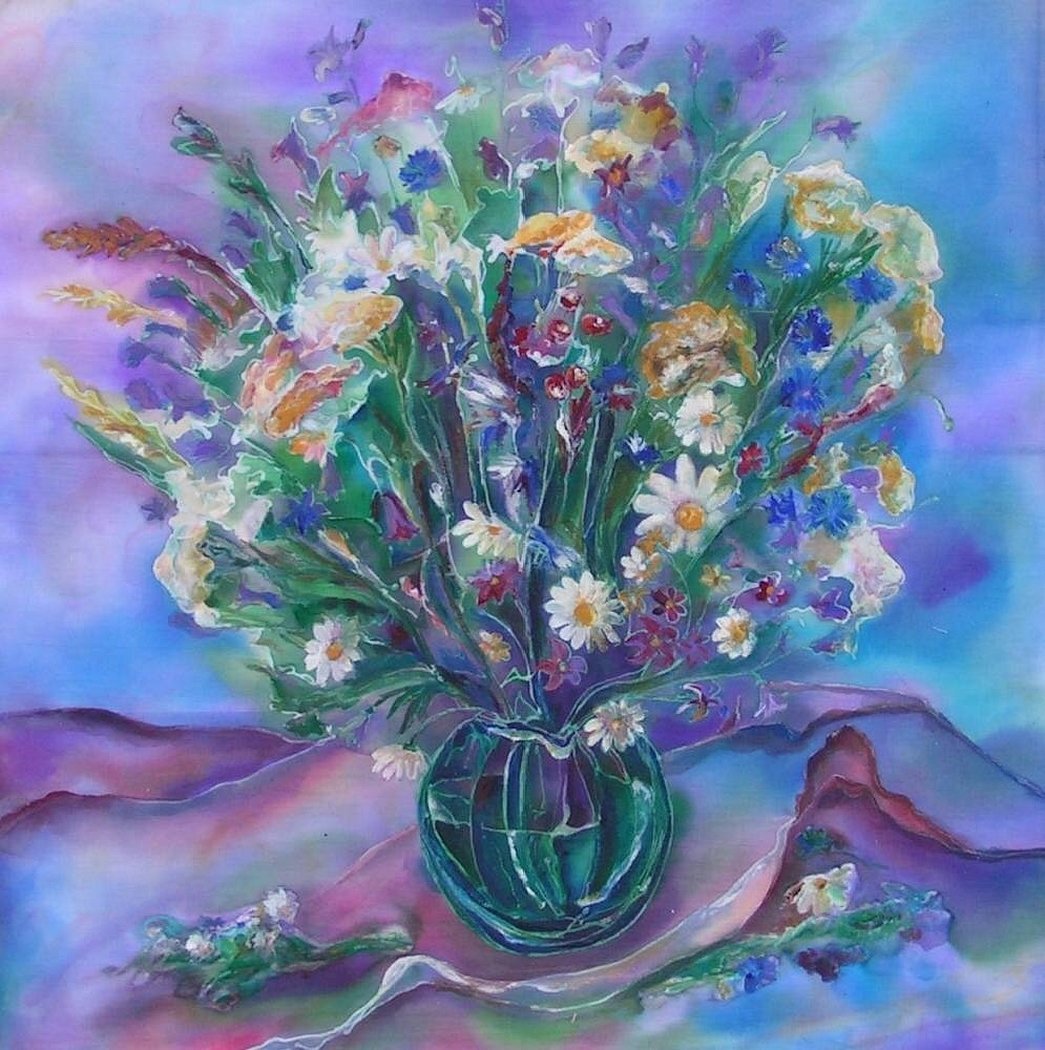
Cold batik
This technique is much simpler. Instead of wax, batik reserves and special contours are used. These materials are sold in craft stores. There are colored (indelible) and colorless reserves, which are removed after washing. The master applies the reserve without breaks, so that the paint does not flow out beyond the limiting contours - this is the main rule. The primary contours are drawn with a simple soft pencil before applying the reserve.
There are also special glass tubes for batik, which are used to apply the cold reserve. This technique is often used on chiffon and silk. It does not use high temperatures, as in the hot batik technique, which makes this type of painting much safer and easier.
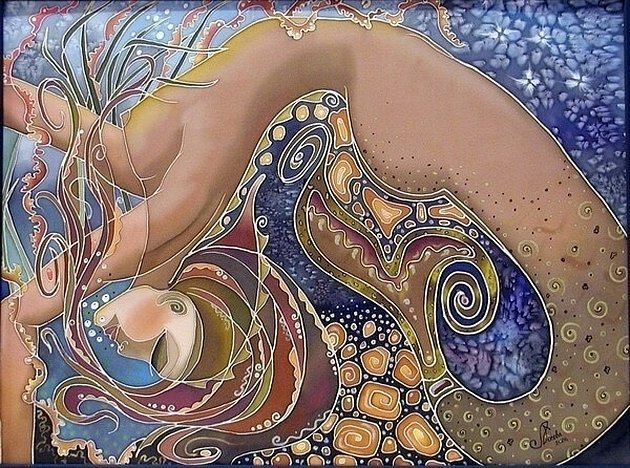
Knotted Batik
A technique that beginners start with. It is used for painting T-shirts, tank tops, and also looks great on tablecloths and napkins. This type involves tying areas of fabric into knots with threads: sometimes randomly, and sometimes with some pattern, and then the fabric is placed in a calcined solution with dye. The pattern appears depending on the system of tying the threads.
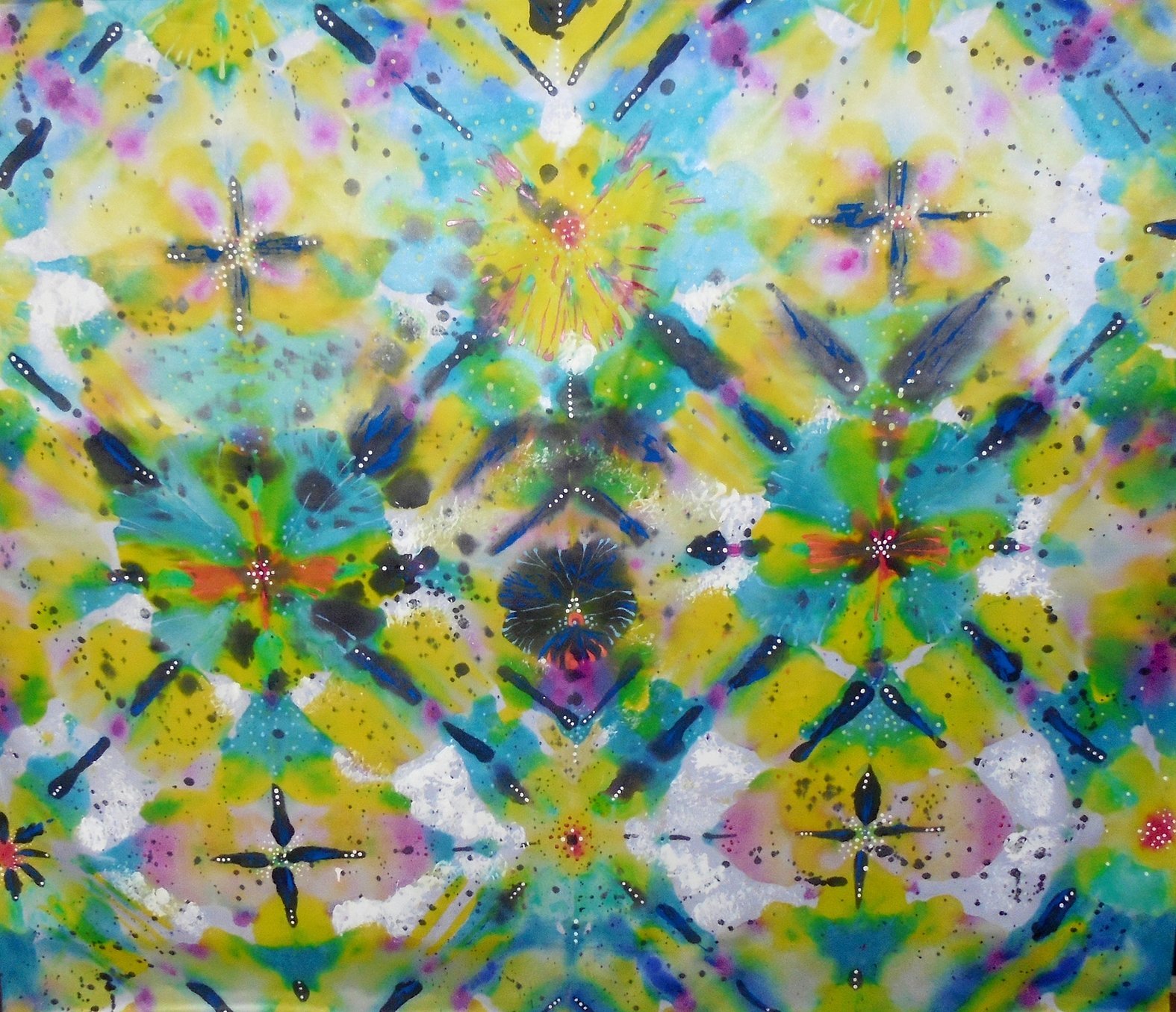
Free painting
There is no need to adhere to a certain technique, there are no exact step-by-step instructions. The result literally becomes unique. The artist must draw the image manually. In this case, they experiment with adding alcohol for the effect of moisturizing the fabric, add elements of reserve and salt.
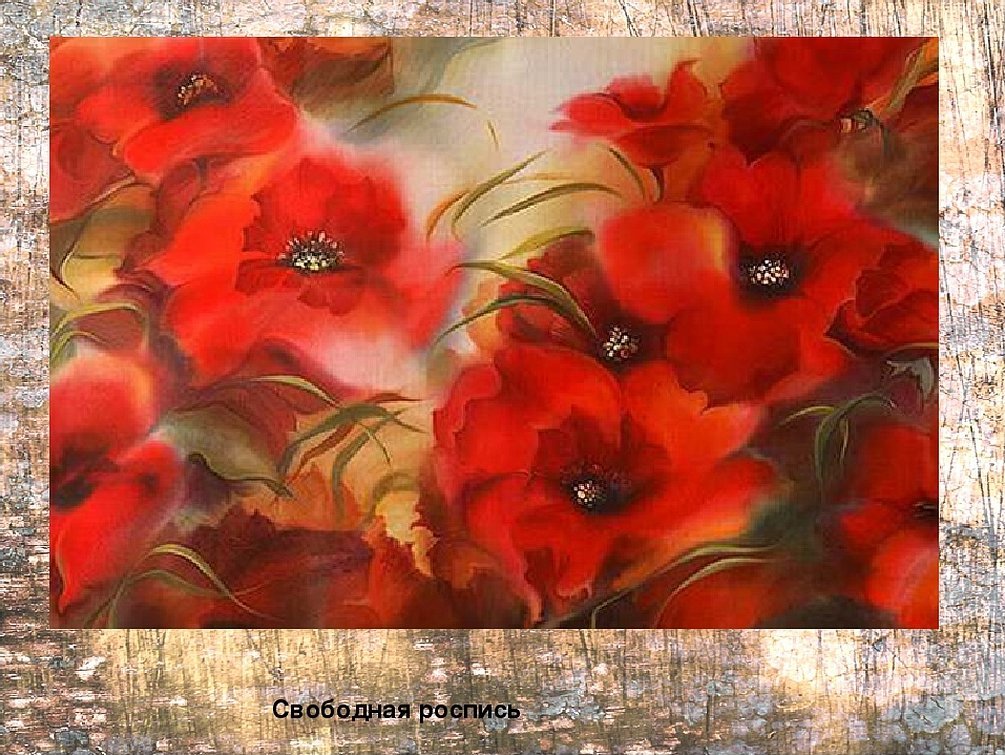
Airbrushing
This type is characterized by its airiness and ease of execution. The resulting contour is slightly blurred, as if melting. Here it is possible to combine the most different colors and shades, as in principle with a spray can. Depending on the angle and distance of the airbrush from the fabric, the pattern is different, but still gentle and blurred.
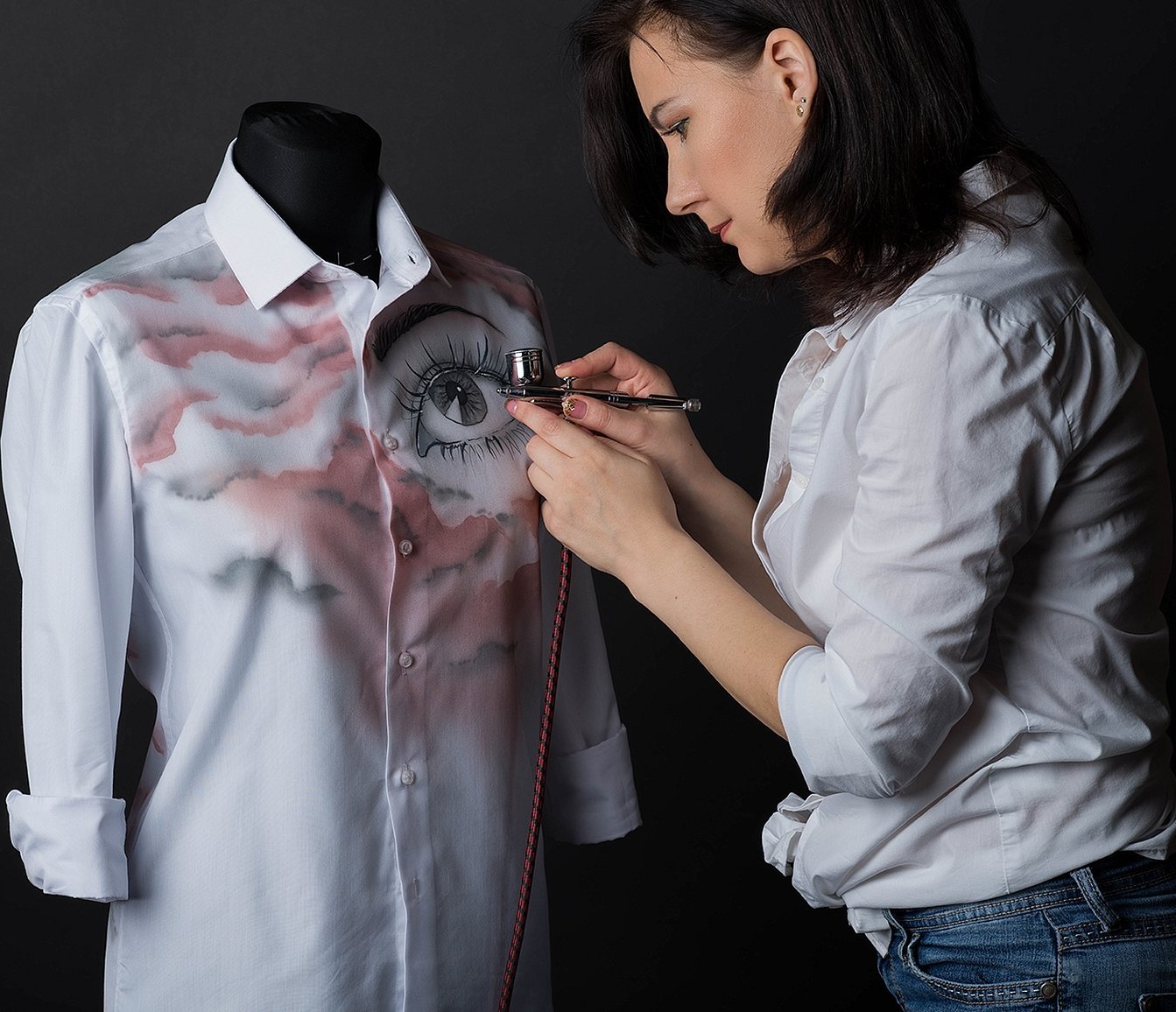
Blowing dye through a straw
It can also be called "blot painting". The technique is rarely used, but the process is quite interesting. A drop of paint is transferred to the fabric with a brush, which is then blown with air using a cocktail straw. This technique may need to be refined using other techniques.
Stencils in fabric painting
Drawing with a stencil is great for people who are not very good at fine art, but want to apply a specific drawing rather than an abstract one. This technique requires a hard brush to apply paint. A stencil can be purchased at a craft store; it is self-adhesive paper with cut-out areas of the drawing.
It is necessary to carefully place the stencil on the surface of the fabric, having previously placed it on a flat surface. If the drawing is detailed, it is necessary to press down small parts well so that the paint does not flow into those places. Brushes can vary in size depending on the size of the areas to be painted. Do not take a lot of paint on the brush so that it does not flow under the stencil.
Depending on the fabric, it needs time to dry. The template must be peeled off carefully to avoid damage. Then the drawing must be fixed with thermal treatment of the iron through paper or cotton.
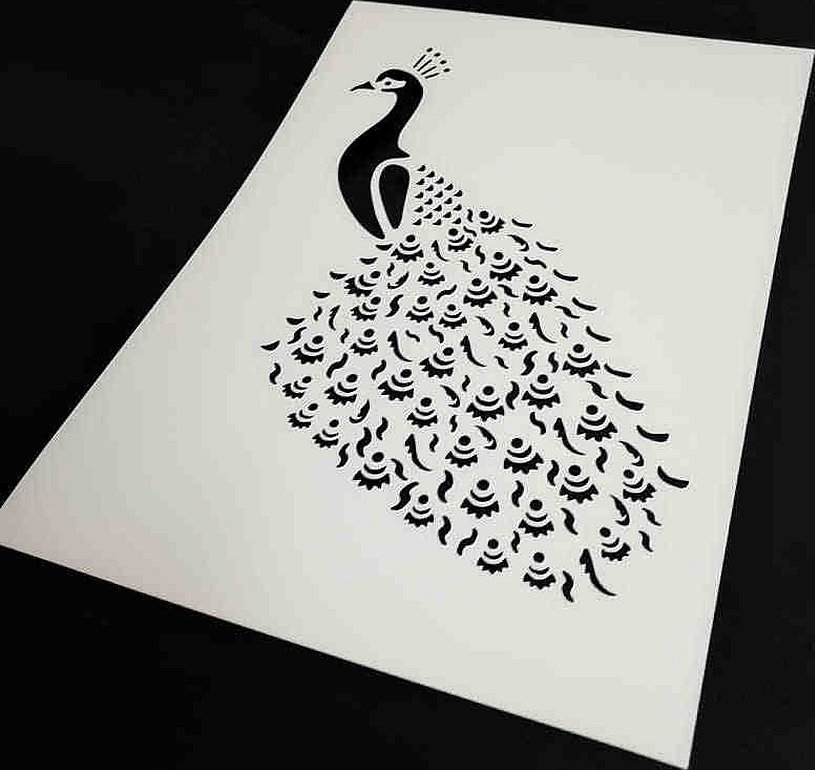
Using different pictures in fabric painting
In craft stores you can buy various pictures for use in various techniques. They can also be found on the Internet on sites with various lessons. They are reusable, although the final results will differ from each other.

This is a fascinating activity that allows a person to occupy himself with art and calm his nerves perfectly. Painting on fabric with paints is a very interesting process, where you want to try all the techniques as soon as possible.




